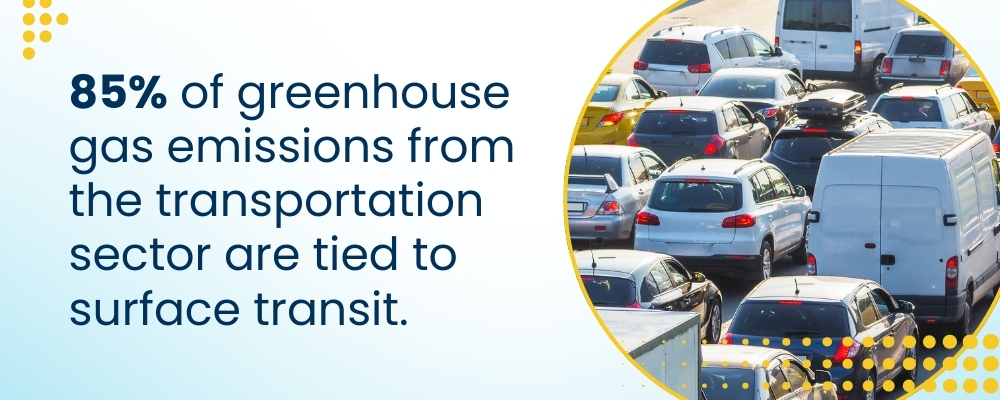Keep the Wheels Turning: Challenges of Aging Transit Electrical Systems
Public transit commuters take over 100 million trips yearly in Oregon and 151 million in Washington’s Puget Sound region. Workers, students, seniors, individuals with disabilities, families, and more all rely on accessible transit to stay connected and independent. However, reliability and safety can be challenging as technology and energy ramp up and transit vehicles age.
seniors, individuals with disabilities, families, and more all rely on accessible transit to stay connected and independent. However, reliability and safety can be challenging as technology and energy ramp up and transit vehicles age.
According to recent estimates, restoring transit systems to good repair could cost $20.3 million by 2033. Addressing the impacts of aging infrastructure in our public transit systems now maintains the reliability and safety of our public transit systems,
3 Ways Aging Transit Systems Impact the Community
Outdated transit systems can result in canceled trips, long and unpredictable wait times, frequent breakdowns, and overall frustration for commuters, impacting daily routines and accessibility. Without dependable, modern systems, economic, social, and environmental issues can arise.
1) Economic Challenges for Citizens
As systems age and break down, ridership is affected, which not only directly impacts the overall economic health of the Pacific Northwest but also underscores the need for action.
- Loss of Earnings and Production: Unreliable transit hampers access to jobs, essential services, and businesses, impacting individual earnings and business productivity.
- Diminished Job Creation: Areas with poor public transportation options are less likely to attract new businesses and developments, directly reducing job creation and community growth.
- Impact on Business Revenue: The lack of investment in transit upgrades and modernization directly affects overall business gains. The yearly loss in the U.S. could amount to nearly $60 billion annually.
- Lower Property Values: A robust and reliable public transit system can potentially boost property value by 150%. Due to factors like aging infrastructure, areas with poor or no transit could see stagnant property values, affecting local tax bases and investment in public services.
2) Financial Effects on the Civic Sector
A lack of ridership caused by aging and outdated transit impacts civic infrastructure and public funds. As revenue from fares decreases, budgets available for maintenance and upgrades also diminish. This can perpetuate a cycle in which outdated infrastructure discourages riders, and fewer riders mean less funding to improve the system.
- Increased Maintenance Costs: Older infrastructure requires more frequent and costly repairs and maintenance, straining civic budgets. Aging public transit systems require constant upkeep, consume more energy, and lack modern efficiency, putting a heavier financial burden on cities to ensure safety and reliability.
- Modernization Delays: Modern transit attracts more users, supports economic growth, and helps cities adapt to changing population and transportation needs. However, budget constraints may delay upgrades, leading to outdated infrastructure, decreased service quality, and rising maintenance costs.
3) Environmental Concerns
Modern, efficient public transit is key to fighting climate change, easing traffic congestion, and boosting the economy. Well-maintained systems can reduce carbon emissions by 63 million metric tons annually. With approximately 85% of greenhouse gas emissions from the transportation sector tied to surface transit, upgrading these networks is crucial for a sustainable future.
- Higher Carbon Emission Output: If public transit becomes scarce or unpredictable, riders might choose personal vehicles as their primary transportation. This means more carbon emissions and air pollution.
- Increased Gasoline Consumption: More cars on the roads translates to higher gasoline usage. Without public transportation, the U.S. could see an extra 6 billion gallons of gas needed annually.

Electrical Professionals Help Power Transit Upgrades
Upgrading aging electrical transit infrastructure presents challenges, such as outdated switchgear, legacy wiring, and systems not built for today’s energy loads. However, these challenges also present opportunities for smarter upgrades, safer operations, and more reliable service for the communities that rely on public transit daily.
Electrical professionals play a critical role in managing these challenges. From ensuring proper lock-out/tag-out procedures to interpreting undocumented panel layouts, trained electricians can help ensure safe and successful transit modernization efforts. Their technical knowledge is essential to avoid:
- Equipment failures due to deferred or improper maintenance
- Damage caused by skipping steps or deviating from procedures during service work
- Safety risks from incomplete or missing system records
Transit upgrades are rarely simple. However, the electrical workforce is delivering scalable upgrades to prepare transit systems for the future.
NECA–IBEW Local 48
The NECA–IBEW Local 48 partnership has been integral to Oregon and Southwest Washington’s electrical industry. Being part of our professional collective helps you position yourself as a leader in the electrical sector. Learn about membership and its benefits.
SIGN UP FOR OUR NEWSLETTER


